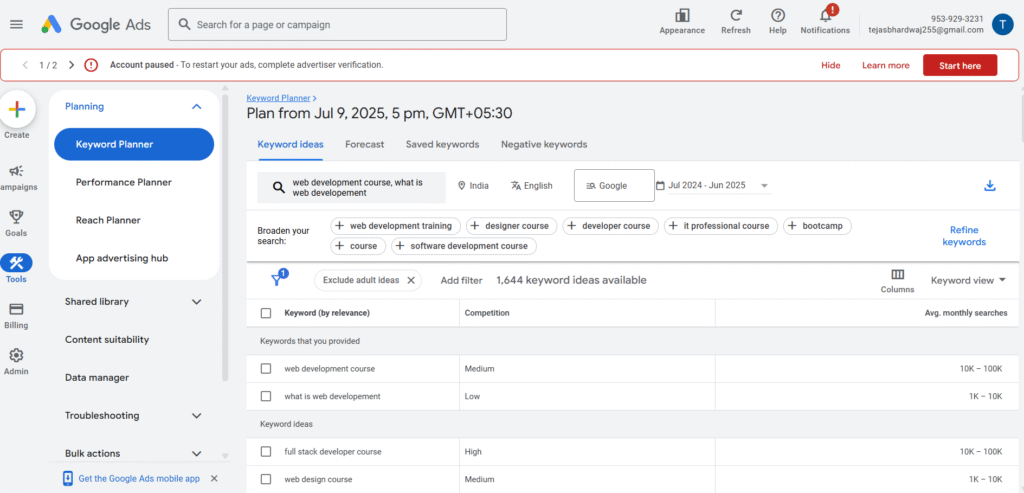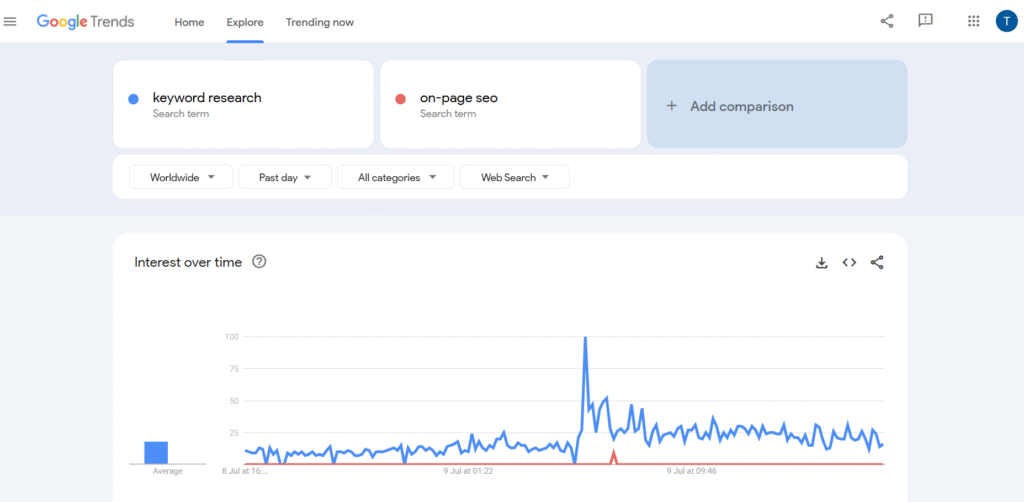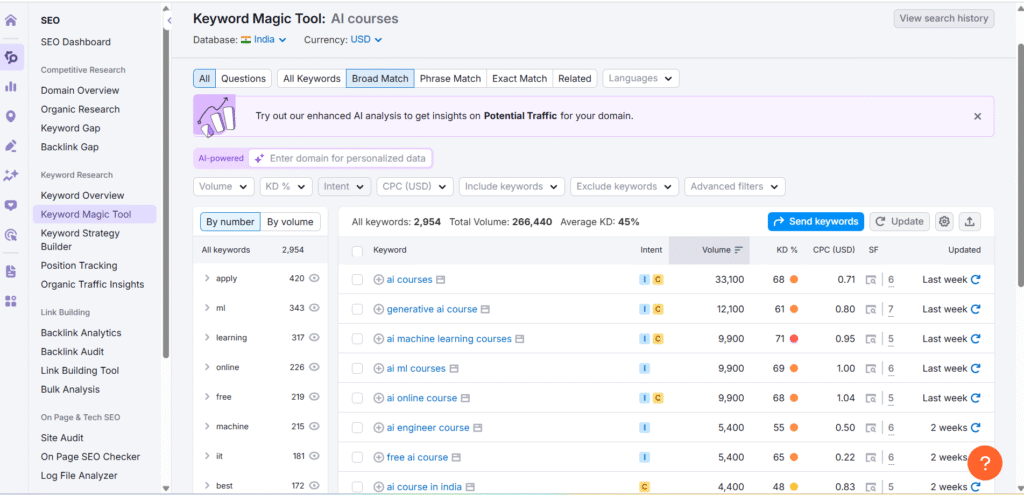Keyword Research 2025 — Best Practices for SEO Success
The digital world, vast and constantly evolving, presents both immense opportunity and significant challenge. At its very heart, guiding users to exactly what they seek, lies an indispensable element: keywords. These aren’t merely isolated terms; they represent the precise linguistic conduits connecting a user’s intent with your valuable online content. Whether someone is simply typing broad key words, asking the foundational question of what are key words, or embarking on a deeper dive into keyword research in SEO, understanding this crucial concept is paramount. As we navigate the complexities of 2025, a profound grasp and strategic application of keywords aren’t just advantageous for SEO; they are non-negotiable for achieving sustained digital visibility and growth. This comprehensive guide will illuminate every critical step, empowering you to confidently uncover what your audience is actively searching for, including how to pick the right terms, effectively use keyword research tools, and leverage crucial keyword difficulty insights to truly dominate your niche.
What Is Keyword Research in SEO?
At its most fundamental level, keyword research in SEO is the meticulous and systematic process of identifying, analyzing, and prioritizing the specific words and phrases that users input into search engines. These are the queries that act as the bridge between a user’s need and the information or solutions you provide online. Imagine your audience searching for a “keyword key word,” or trying to grasp the essence of “keywording,” or even wondering “what is keywording?” The process of keyword research aims to uncover these exact terms, along with their related queries, to ensure your content is precisely aligned with audience demand.
This analytical deep dive is essential because it effectively bridges your content with your audience’s needs and questions. Without it, your content creation efforts are akin to writing in the dark – without a clear understanding of what your potential readers or customers are truly seeking, your content is unlikely to be discovered by those who need it most. It’s the foundational reconnaissance that informs every subsequent SEO decision, from content strategy to on-page optimization.
Moreover, a comprehensive understanding of keyword types explained in digital marketing – specifically the critical distinction between short-tail vs. long-tail keywords – is vital. This knowledge allows you to strategically position your content, targeting both broad foundational topics and highly specific, intent-driven queries, ensuring a wider reach and more engaged traffic. By knowing the various types, you can build a more diverse and resilient keyword portfolio.
The Purpose of Keyword Research in SEO Strategy
At its core, what is the purpose of keyword research in SEO strategy? It’s far more than just compiling a list of words; it’s about gaining profound insight into your target audience’s thoughts, needs, and behaviors. This understanding then enables a highly targeted and efficient approach to content creation and optimization.
Discover terms your audience actually uses:
This is perhaps the most fundamental purpose. Instead of guessing, keyword research provides data-backed evidence of the exact language your potential customers or readers employ when seeking solutions or information relevant to your niche. This ensures your content speaks their language.
Prioritize those terms based on keyword difficulty and intent:
Not all keywords are created equal. Research allows you to assess the competition for specific terms (keyword difficulty) and understand the underlying user intent (informational, navigational, transactional). This strategic prioritization helps you focus efforts on terms where you have the best chance to rank and attract the most valuable traffic.
Assess your competition via competitor keyword analysis:
By analyzing the keywords your rivals rank for, you gain invaluable insights into their content strategies, their strengths, and potential gaps in the market. This competitor keyword analysis helps you identify opportunities to outrank them or to target lucrative niches they might be overlooking.
Map your content to high-value topics with search intent in mind:
Keyword research isn’t just about finding individual words; it’s about identifying clusters of related topics and understanding the specific intent behind various queries. This enables you to create comprehensive, authoritative content that fully satisfies user needs, positioning your website as a go-to resource.
Furthermore, leveraging specific, nuanced terms, often known as long-tail keywords, plays a crucial role in achieving these purposes. Queries like “step-by-step guide to keyword research and analysis” or “keyword research and analysis best practices 2025” help to capture highly engaged traffic. These users are often further along in their search journey and are more likely to convert or deeply engage with your content. By addressing these specific long-tail queries, you not only attract valuable visitors but also build topical authority, signaling to search engines that your site is a comprehensive resource on a given subject.
Primary, Secondary, LSI & Long-Tail Keywords
A sophisticated SEO strategy recognizes that not all keywords serve the same function. A robust keyword profile comprises various types, each playing a distinct yet complementary role in your overall visibility.
Primary vs Secondary
Primary: keyword research — This is the absolute core of your blog post or web page. It’s the main topic you are aiming to rank for, the central theme around which all your content revolves. For this article, “keyword research” is the anchor, appearing prominently in your title, introduction, and potentially in section headings. It signals to both users and search engines the central subject matter.
Secondary: These are closely related terms that support and provide context for your primary keyword. You should naturally include terms like key words, what are key words, what is keywording, keyword key word, and keyword research in SEO within sections, subheadings, and frequently asked questions (FAQs). Their inclusion helps to broaden the relevance of your content, capture variations of user queries, and demonstrate a comprehensive understanding of the topic without resorting to unnatural repetition of the primary term. They provide semantic depth and cover slightly different angles of the main subject.
LSI Keywords
Latent Semantic Indexing (LSI) keywords are not simply synonyms but rather semantically related terms that enhance topical relevance. Modern search engines are highly sophisticated and understand the context and relationships between words. Using LSI keywords helps Google and other search engines comprehend the broader scope and depth of your content, ensuring it’s not misinterpreted. Integrate these terms naturally throughout your article:
- keyword research tools
- keyword difficulty
- competitor keyword analysis
- how to choose keywords
- keyword analysis techniques
- semantic keyword research
These words act as contextual cues, signaling to Google the full breadth and depth of your topic. For instance, if you’re discussing “apple” (the fruit), including terms like “orchard,” “cider,” and “nutritional value” helps confirm the context, preventing confusion with “Apple” (the company). Similarly, by weaving in these LSI terms, you reinforce the comprehensive nature of your discussion on keyword research, helping search engines understand your topic’s depth.
Long-Tail Keywords
Long-tail keywords are highly specific, multi-word phrases that represent more detailed user queries. While they individually may have lower search volumes compared to broad head terms, they collectively drive significant, highly qualified traffic because they often reflect a more specific user intent, frequently indicating someone further along in their decision-making or learning process. Integrate these longer phrases strategically, often as section headings, sub-points, or within questions, to cover specific and in-depth user inquiries:
- step-by-step guide to keyword research and analysis
- what is the purpose of keyword research in SEO strategy
- keyword types explained in digital marketing
- keyword research and analysis best practices 2025
Each of these long-tail queries offers a unique hook, targeting very specific user needs and allowing you to provide granular answers that truly resonate with your audience. They are easier to rank for due to lower competition and often lead to higher conversion rates because they match precise user intent.
Step-by-Step Guide to Keyword Research & Analysis
Navigating the landscape of keywords can seem daunting, but a systematic approach makes it manageable and highly effective. Follow this step-by-step guide to keyword research and analysis to build a robust foundation for your SEO efforts.
Step 1 – Understand User Intent

Before you even open a keyword tool, the critical first step is to define user intent. Ask yourself: What exactly is your audience hoping to achieve or learn when they type a query? Are they asking: What are key words? seeking a basic definition, versus How to do keyword research? indicating a desire for practical application? Understanding this distinction is paramount.
Commercial Investigation Intent: Users researching before a purchase (e.g., “best running shoes review”). Tools like Google Suggest (autocomplete), Google Trends, and related searches on the SERP (Search Engine Results Page) are invaluable for discerning intent. For instance, analyzing trends can reveal seasonal interest in certain terms or emerging queries that indicate new user needs, as highlighted in any up-to-date SEO keyword research guide for 2025.
Informational Intent: Users seeking knowledge (e.g., “how to tie a tie”).
Navigational Intent: Users looking for a specific website or page (e.g., “Google Maps”).
Transactional Intent: Users ready to make a purchase or take action (e.g., “buy running shoes online”).
Step 2 – Choose Tools & Assess Difficulty
With intent in mind, it’s time to leverage the power of keyword research tools. These platforms are your indispensable allies in unearthing data. Popular choices include:
Ubersuggest (Freemium): Provides keyword ideas, content ideas, and basic SEO metrics. These tools provide crucial data points such as monthly search volume (the average number of times a keyword is searched per month) and, most critically, keyword difficulty. The keyword difficulty metric estimates how challenging it will be to rank on the first page of Google for a given term, factoring in the strength of existing competitors. They also unlock vital competitor keyword analysis opportunities, revealing terms your competitors are successfully ranking for.
Google Keyword Planner (Free): Excellent for discovering new keywords and getting traffic estimates.

Ahrefs (Paid): Comprehensive suite offering robust backlink analysis, site audits, and detailed keyword data, including keyword difficulty scores and traffic potential.
Semrush (Paid/Freemium): Offers competitive analysis, keyword research, site audits, and more, providing insights into your rivals’ strategies and suggesting keywords.
KWFinder (Paid/Freemium): Known for its user-friendly interface, it’s great for finding long-tail keywords with lower competition.
Step 3 – Semantic & LSI Research
To ensure your content is truly comprehensive and aligns with modern search engine algorithms, you must move beyond exact keyword matching. This step involves diving into semantic keyword research, which focuses on the meaning and context behind words. It’s about pulling in terms that are conceptually related to your primary keyword, even if they don’t contain the exact phrase.
Guidance tools frequently suggest terms your top competitors are already leveraging, enriching your contextual understanding and helping you cover all angles of a topic. This enriches your content, signaling to search engines that your piece provides a thorough and relevant answer to a user’s broad query. Think of it as adding layers of meaning that Google can now interpret.
Utilize keyword analysis techniques that identify these relationships. Many advanced tools have features that automatically suggest LSI keywords or “people also ask” questions.
Step 4 – Build Long-Tail Variations
Once you have your core keywords and LSI terms, the next vital step is to expand your list with long-tail keywords. These are typically easier to rank for due to lower competition and often attract more qualified traffic because they reflect a very specific user intent.
Convert your broader seed terms into detailed long-tail variants. For example, if your seed term is “SEO strategy,” long-tail variations might include:
What is the purpose of keyword research in SEO strategy?
Keyword types explained in digital marketing
“How to measure SEO ROI for small businesses
Best practices for local SEO in 2025″ These detailed queries are precisely what users type when they are ready to act, buy, or find very specific information. They indicate a high level of engagement and a clear need, making them exceptionally valuable targets.
Step 5 – Prioritize & Map
The final step in your research phase is to organize and prioritize your keyword list.
Sort your keyword list using a high/medium/low priority system based on a combination of search volume, keyword difficulty, and conversion potential.
Generally, for new content or websites, focus on long-tail keywords and moderate-difficulty seed terms first. These offer quicker wins and help build initial authority.
Strategically weave your primary terms into your most authoritative pages and main content pillars.
Finally, map your chosen keywords to specific pages, sections, or even paragraphs within your content. Each piece of content should have a clear primary keyword and a supporting cast of secondary and LSI terms. This structured approach ensures every piece of content serves a clear purpose and targets specific search queries.
Best Practices for Keyword Research & Analysis (2025 Edition)
The landscape of search is constantly evolving, and 2025 brings new considerations for keyword strategy. Staying ahead means adapting your practices.
Embrace AI SEO, AEO, and GEO:
Modern search is less about simple keyword matching and more about understanding and generating answers. Optimize for Answer Engines (AEO) and Generative AI (GEO) by structuring your content with clear Q&A sections, explicit definitions, and rich schema markup. This helps AI models extract information directly from your page to answer queries.
Front-load Primary Term:
For on-page SEO signals, include your primary term, like “keyword research,” within the first 25 words of your content. This immediately tells search engines (and users) what your page is about.
Craft Unique Titles & Metadata:
Ensure every page has a unique title tag and meta description that incorporates both your primary and relevant secondary terms. However, critically, avoid duplication across different pages, as this confuses search engines.
Optimize URLs with Clean Keywords:
Keep your URLs concise and descriptive. For instance, a URL like /keyword-research-guide/ is clean, keyword-rich, and easily understood by both users and search engines.
Group Related Sections with LSI Terms:
Utilize descriptive headings (H2s, H3s) that incorporate LSI terms. This helps group related content sections, signaling topic clusters to search engines and improving content organization for users. It demonstrates topical authority and depth.
User Experience (UX) First:
While keywords are important, never sacrifice user experience for keyword density. Google prioritizes content that is valuable, easy to read, and genuinely helpful. Natural language, clear structure, and engaging content will always win.
These keyword research and analysis best practices 2025 reflect the ongoing shift towards semantic understanding and user-centric content, ensuring your strategy is future-proof.
Tools & Techniques: Keyword Research Tools
Choosing the right keyword research tools is crucial for an effective strategy. They provide the data necessary to make informed decisions.
Free tools:
Google Trends: Ideal for identifying keyword popularity over time and seasonal trends.

Google Keyword Planner: Directly from Google, excellent for generating new keyword ideas and estimating search volume.
Ubersuggest: Offers keyword ideas, content suggestions, and basic SEO metrics with a generous free tier.
Freemium tools (offering limited free access, with paid upgrades):
Keywords Everywhere: A browser extension that provides keyword data directly on search results pages.
Semrush: Offers a powerful suite of tools for keyword research, competitor analysis, site auditing, and more, with some features available in a free account.

The SEMrush Keyword Magic Tool provides a deep dive into keyword opportunities, showing volume, intent, difficulty (KD%), and CPC — all in one interface. This powerful tool helps you prioritize high-potential keywords based on real-time SEO metrics.
Paid tools (industry leaders with comprehensive features):
Ahrefs: Renowned for its extensive backlink data, site explorer, and highly accurate keyword metrics, including advanced keyword difficulty analysis.
Moz Keyword Explorer: Provides insights into keyword difficulty, volume, and sophisticated keyword suggestions.
KWFinder: Focuses on finding long-tail keywords with lower SEO difficulty.
These sophisticated platforms don’t just offer raw data; they provide invaluable insights into keyword difficulty, search volume, the underlying search intent, and even employ AI-driven semantic keyword research capabilities to suggest contextually related terms. Leveraging these tools effectively transforms keyword research from a guessing game into a data-driven science.
FAQ
Here are some common questions about keywords, providing quick, precise answers.
What is keywording?
Keywording is the strategic art and science of selecting and embedding meaningful terms—like what is keywording, key words, and keyword key word—into your content and digital assets. Its primary aim is to align your content with user search intent and broader SEO goals, making your information discoverable by the right audience. It’s the operational step following keyword research, putting identified terms into practice.
What are key words?
Key words are the basic units of online search—they can be single words or short phrases that users type into search engines to find information, products, or services. They serve as the anchor of your content, directly connecting it to what people are actively seeking online. Essentially, they are the verbal expressions of a user’s query.
What is the purpose of keyword research in SEO strategy?
The core purpose of keyword research in SEO strategy is multifaceted: it uncovers real search behavior, illuminates untapped content ideas, and provides critical competitive insight. By engaging in thorough research, you gain the knowledge to craft a detailed step-by-step guide to keyword research and analysis or any other content piece with confidence, rather than merely hoping your content will somehow resonate with an unknown audience. It provides a data-driven blueprint for visibility.
Conclusion & Next Steps
Mastering keyword research is not a one-time task but an ongoing commitment. It’s the lifeblood of effective SEO, consistently directing your content creation and optimization efforts.
Recap: Always start by identifying your primary, secondary, LSI, and long-tail keywords. Leverage powerful keyword research tools to gather data, meticulously assess keyword difficulty for each term, apply advanced semantic keyword research techniques to build contextual relevance, and structure your content intelligently around long-tail queries to capture specific user intent.
Apply: Consider this article your foundational step-by-step guide to keyword research and analysis. Regularly revisit and update your keyword strategy with the fresh insights gleaned from these 2025 SEO best practices. The digital landscape shifts rapidly, and your strategy must evolve with it.
Monitor & Improve: The work doesn’t end with publishing. Continuously track your keyword rankings, analyze user engagement metrics (like bounce rate and time on page), and keep an eye on emerging keyword trends within your niche. Use this feedback loop to refine your approach, discover new opportunities, and consistently improve your organic performance over time.



